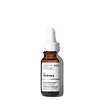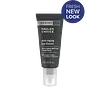What's inside
What's inside
 Key Ingredients
Key Ingredients

 Benefits
Benefits

 Concerns
Concerns

 Ingredients Side-by-side
Ingredients Side-by-side

Water
Skin ConditioningGlycerin
HumectantButylene Glycol
HumectantPropanediol
SolventDipropylene Glycol
HumectantAcetyl Glucosamine
Skin ConditioningNiacinamide
SmoothingPalmitoyl Tripeptide-38
Skin ConditioningAcetyl Tetrapeptide-5
HumectantMyristoyl Nonapeptide-3
Skin ConditioningDipeptide Diaminobutyroyl Benzylamide Diacetate
Skin ConditioningCaffeine
Skin ConditioningEpigallocatechin Gallatyl Glucoside
AntioxidantGallyl Glucoside
AntioxidantFraxinus Excelsior Bark Extract
Skin ConditioningSilanetriol
Arginine
MaskingPentylene Glycol
Skin ConditioningHydroxymethoxyphenyl Decanone
Skin ConditioningPropyl Gallate
AntioxidantMaltodextrin
AbsorbentHydroxypropyl Cyclodextrin
MaskingHydroxyethylcellulose
Emulsion StabilisingXanthan Gum
EmulsifyingCitric Acid
BufferingGlycolic Acid
BufferingSodium Citrate
BufferingPolysorbate 20
EmulsifyingTrisodium Ethylenediamine Disuccinate
Dehydroacetic Acid
PreservativeEthylhexylglycerin
Skin ConditioningBenzyl Alcohol
PerfumingPhenoxyethanol
PreservativeChlorphenesin
AntimicrobialWater, Glycerin, Butylene Glycol, Propanediol, Dipropylene Glycol, Acetyl Glucosamine, Niacinamide, Palmitoyl Tripeptide-38, Acetyl Tetrapeptide-5, Myristoyl Nonapeptide-3, Dipeptide Diaminobutyroyl Benzylamide Diacetate, Caffeine, Epigallocatechin Gallatyl Glucoside, Gallyl Glucoside, Fraxinus Excelsior Bark Extract, Silanetriol, Arginine, Pentylene Glycol, Hydroxymethoxyphenyl Decanone, Propyl Gallate, Maltodextrin, Hydroxypropyl Cyclodextrin, Hydroxyethylcellulose, Xanthan Gum, Citric Acid, Glycolic Acid, Sodium Citrate, Polysorbate 20, Trisodium Ethylenediamine Disuccinate, Dehydroacetic Acid, Ethylhexylglycerin, Benzyl Alcohol, Phenoxyethanol, Chlorphenesin
Water
Skin ConditioningDimethicone
EmollientSodium PCA
HumectantHydrogenated Polyisobutene
EmollientAscorbyl Glucoside
AntioxidantSodium Polyacrylate
AbsorbentHydrogenated Lecithin
EmulsifyingGlucosyl Hesperidin
HumectantCopper Gluconate
Skin ConditioningTroxerutin
Skin ConditioningDisodium Rutinyl Disulfate
AntioxidantResveratrol
AntioxidantPalmitoyl Tripeptide-38
Skin ConditioningCaprooyl Tetrapeptide-3
Skin ProtectingGlycyrrhiza Glabra Root Extract
BleachingPhytic Acid
Beta-Glucan
Skin ConditioningAcetyl Glucosamine
Skin ConditioningTocopherol
AntioxidantAllantoin
Skin ConditioningAdenosine
Skin ConditioningDextran
Caprylic/Capric Triglyceride
MaskingSea Whip Extract
Skin ConditioningArctostaphylos Uva Ursi Leaf Extract
Skin ConditioningSalix Alba Bark Extract
AstringentPolyacrylate Crosspolymer-6
Emulsion StabilisingHydroxypropyl Cyclodextrin
MaskingXanthan Gum
EmulsifyingCetearyl Alcohol
EmollientMaltodextrin
AbsorbentBenzyl Alcohol
PerfumingPhenoxyethanol
PreservativeWater, Dimethicone, Sodium PCA, Hydrogenated Polyisobutene, Ascorbyl Glucoside, Sodium Polyacrylate, Hydrogenated Lecithin, Glucosyl Hesperidin, Copper Gluconate, Troxerutin, Disodium Rutinyl Disulfate, Resveratrol, Palmitoyl Tripeptide-38, Caprooyl Tetrapeptide-3, Glycyrrhiza Glabra Root Extract, Phytic Acid, Beta-Glucan, Acetyl Glucosamine, Tocopherol, Allantoin, Adenosine, Dextran, Caprylic/Capric Triglyceride, Sea Whip Extract, Arctostaphylos Uva Ursi Leaf Extract, Salix Alba Bark Extract, Polyacrylate Crosspolymer-6, Hydroxypropyl Cyclodextrin, Xanthan Gum, Cetearyl Alcohol, Maltodextrin, Benzyl Alcohol, Phenoxyethanol
 Reviews
Reviews

Alternatives
Ingredients Explained
These ingredients are found in both products.
Ingredients higher up in an ingredient list are typically present in a larger amount.
Acetyl Glucosamine is an antioxidant and humectant. It is an amino acid sugar and is naturally found in our skin.
The cool thing about this ingredient? It helps the skin produce hyaluronic acid and boost hydration. It also has antioxidant benefits to protect skin cells.
When paired with niacinamide, Acetyl Glucosamine has been shown to be effective at reducing discoloration.
Learn more about Acetyl GlucosamineBenzyl Alcohol is most commonly used as a preservative. It also has a subtle, sweet smell. Small amounts of Benzyl Alcohol is not irritating and safe to use in skincare products. Most Benzyl Alcohol is derived from fruits such as apricots.
Benzyl Alcohol has both antibacterial and antioxidant properties. These properties help lengthen the shelf life of products. Benzyl Alcohol is a solvent and helps dissolve other ingredients. It can also improve the texture and spreadability.
Alcohol comes in many different forms. Different types of alcohol will have different effects on skin. This ingredient is an astringent alcohol.
Using high concentrations of these alcohols are drying on the skin. They may strip away your skin's natural oils and even damage your skin barrier. Astringent alcohols may also irritate skin.
Other types of astringent alcohols include:
According to the National Rosacea Society based in the US, you should be mindful of products with these alcohols in the top half of ingredients.
Any type of sanitizing product will have high amounts of alcohol to help kill bacteria and viruses.
Learn more about Benzyl AlcoholThis ingredient is used in skincare as a delivery system.
It works by "encapsulating" active ingredients with its unique ring shape that is water-loving on the outside and oil-loving on the inside. This improves the stability and absorption of the product into the skin.
According to a manufacturer, it also offer some moisturizing effects.
Learn more about Hydroxypropyl CyclodextrinMaltodextrin is a polysaccharide. It is derived from starch such as rice, corn, wheat, or potato starch.
In food, Maltodextrin is used to improve the texture and thicken a product. Due to its structure, it can help create a gel texture. As an emulsion stabilizer, it helps keep the ingredients in a product together.
As a polysaccharide, Maltodextrin has moisturizing properties. Polysaccharides are a type of carbohydrate. The top layer of skin uses polysaccharides to retain water, keeping the skin hydrated.
Maltodextrin is water soluble and has a sweet taste.
Learn more about MaltodextrinThis synthetic, signal peptide has unique skin conditioning properties in that is a matrikine-mimetic compound.
First of all, Palmitoyl Tripeptide-38 is a signal peptide; signal peptides tell the body to create more collagen.
What is a matrikine-mimetic compound?
This peptide has the ability to mimic matrikines in skin. Our skin created matrikines by breaking down matrix proteins into peptides.
Matrikines play a role in:
Though further research is needed, this ingredient seems pretty promising. In one study, women over the age of 40 with visible photoaging used a vitamin C serum with this ingredient for 56 days (15% ascorbid acid, 5 ppm palmitoyl tripeptide‐38). The results found improvement in skin roughness and skin tone.
This peptide is also part of the famous Matrixyl synthe’6, a blend of ingredients that also includes glycerin, water, and hydroxypropyl cyclodextrin.
Learn more about Palmitoyl Tripeptide-38Phenoxyethanol is a preservative that has germicide, antimicrobial, and aromatic properties. Studies show that phenoxyethanol can prevent microbial growth. By itself, it has a scent that is similar to that of a rose.
It's often used in formulations along with Caprylyl Glycol to preserve the shelf life of products.
Water. It's the most common cosmetic ingredient of all. You'll usually see it at the top of ingredient lists, meaning that it makes up the largest part of the product.
So why is it so popular? Water most often acts as a solvent - this means that it helps dissolve other ingredients into the formulation.
You'll also recognize water as that liquid we all need to stay alive. If you see this, drink a glass of water. Stay hydrated!
Learn more about WaterXanthan gum is used as a stabilizer and thickener within cosmetic products. It helps give products a sticky, thick feeling - preventing them from being too runny.
On the technical side of things, xanthan gum is a polysaccharide - a combination consisting of multiple sugar molecules bonded together.
Xanthan gum is a pretty common and great ingredient. It is a natural, non-toxic, non-irritating ingredient that is also commonly used in food products.
Learn more about Xanthan Gum